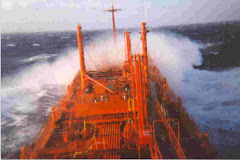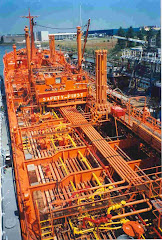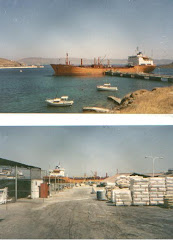Black Friday 20th April saw another Fitch downgrade to B+/ negative outlook, the ECB vehemently rejecting any debt restructuring and Norway suspending a Euro 42 mio grant to Greece. Spreads soared to 1.340 basis points equivalent to 17% market-level interest rates. Total disaster for beleaguered and inadequate Greek Finance minister George Papaconstantinou, a man well over his head. Will Greece avoid default and survive in the Eurozone?
Last year at the annual Minsky Conference at the Levy Economics Institute, Rob Parenteau demonstrated in his presentation why fiscal austerity will fail in Greece and lead to a Fisher debt deflation vortex. The prerequisite for the EU/ IMF program to work is a surge in exports that counter balances the demand compression from austerity to achieve high private net savings. Otherwise reducing the fiscal deficit will irreparably erode the domestic private sector and the tax base will implode.
In fact this seems to be happening as there is a massive drop in revenues 1st quarter this year from the recession. Now Mr. Papaconstantinou in "Hail Mary" desperation wants to raise taxes in part to make up for the shortfall. So far his record in containing public expenses has been dismal despite all the noise. Clearly he never had the opportunity to read the work of Arthur Laffer in his studies at LSE and fails to comprehend that raising tax rates does not bring a linear increase in revenue, but rather the curve is parabolic and at a certain point revenues start to fall.

Normally trade deficits are corrected by external currency devaluation, but Greece suffers from the problem of the Impossible Trinity. It is locked into a Eurozone straight jacket that leaves minimal room for a current account surplus . ECB monetary policy is not accommodative to this effort. In fact, it is counterproductive with its hawkish stance recently raising interest rates.
Already Greek public debt is at unmanageable levels. Yet the ECB is maintaining a Taliban stand on any debt restructuring, with Jean-Claude Trichet, ECB president, rudely storming out of a finance ministers meeting and threatening to deny Greek banks access to the ECB’s refinance operations after any restructuring. The threat would force Greece out of the eurozone within days, creating mayhem.
Herein lies the conundrum: Greek public debt is constantly expanding and the Greek GDP is rapidly contracting. Mathematically, the fiscal deficits will never close and create surpluses in time to contain the debt explosion. Greek debt needs restructuring because it it is at unsustainable levels and cannot be paid down.
Greek banks survive by short-term funding from the ECB/Eurosystem, using mainly Greek sovereign debt as collateral. When the value of the Greek sovereign debt declines in the secondary market, the mark to-market value of the collateral offered by the Greek banks to the ECB/Eurosystem declines and triggers margin calls (demands for additional collateral to make up for the reduced value of the existing collateral). European banks, especially Eurozone banks, are seriously exposed to Greek risk. This has terrified the ECB and has led Mr. Trichet to take such emotional positions on Greek debt restructuring.

Of course, Greece in a new national currency free from the shackles of counterproductive ECB monetary policy could make an immediate sharp nominal and real currency depreciation with gain in competitiveness, which would be most welcome and would take years by internal devaluation with risks of insurmountable social revolt.
The spoiler here is that unless the balance of economic and political power in Greece is changed fundamentally, a depreciation of the nominal exchange rate would soon lead to adjustments of domestic costs and prices that would restore the old uncompetitive real equilibrium. The key rigidities in small open economies like Greece are real rigidities, not persistent Keynesian nominal rigidities, which are necessary for a depreciation or devaluation of the nominal exchange rate to have a material and durable impact on real competitiveness.
The existing political system is based on state-sponsored capitalism, a rampant spoils system and a parasitic, rent-seeking cronyism with the private sector. The status-quo interests are wed to these rigidities and see leaving the Eurozone as a means of maintaining their privileges. Whether or not Greece leaves the Eurozone, it still has enormous fiscal problems that cannot be cured without substantial institutional changes and a new political culture.
On the other hand, for Greece to live and survive within the Eurozone would require the ECB to accept Greek debt restructuring along the lines of Brady Bonds and more accommodative monetary policies as well as Euro depreciation to facilitate the fiscal restructuring efforts by the periphery countries to restore competitiveness. Ironically a managed Greek default and debt restructuring with the ECB continuing to finance Greek banks with 'C' ratings might well achieve this depreciation. No one could possibly accuse the ECB here of any manipulation!
The ECB rules and the reigning mentality of its current members precludes this. The EU elite is badly divided on these issues. Major EU core members fear rating downgrades and paying higher interest rates on their debt. Many are dead set against this even if it means sending the Eurozone periphery countries to disaster. The Eurozone would have to reach an common denominator for the periphery countries that they are so far not prepared to do.
The failure of the current Greek government to inspire any confidence and their deteriorating credibility with the IMF/ EU do not help to make these decisions any easier. Why should EU core members throw more of their taxpayer money and sacrifice their credit rating for what seems a bottomless hole in Greece?
So it is presently a Mexican stand off: Greece is between a rock and a hard place on the edge of disaster.











